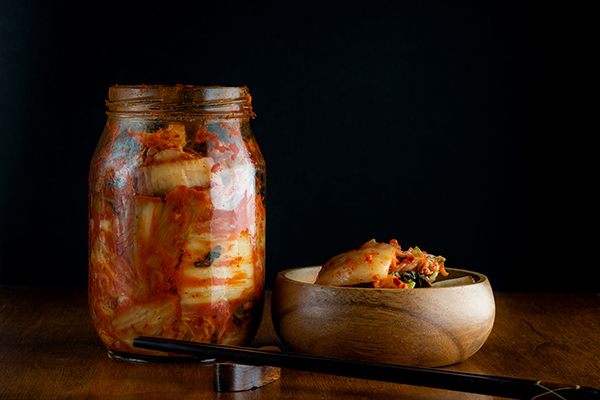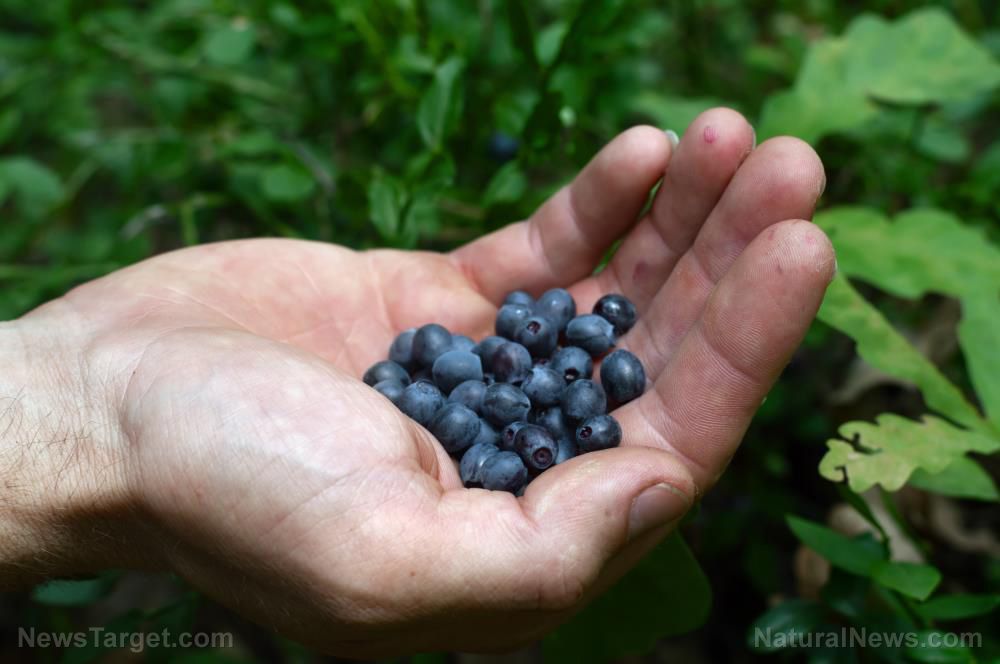
Advertisement
Kimchi is one of the most important traditional foods in Korea. Made from fermented napa cabbage using various spices, this popular side dish can also include other vegetables, such as radishes and carrots.
The flavor of kimchi varies depending on the ingredients used, but it’s best described as spicy and sour. Kimchi can be eaten by itself or used in cooking to flavor stews, rice and noodles.
Because kimchi is fermented, it’s packed with probiotics. Probiotics are live microorganisms that keep your gut healthy. It is thanks to probiotics that kimchi is able to offer plenty of health benefits.
Here are six reasons to incorporate this fermented Korean superfood into your diet:
- Improves digestion – Kimchi is good for your gut. In fact, this is one of the major reasons why healthy eaters are so into this dish. It’s rich in probiotics, which are naturally “made” during fermentation. Probiotics help make foods more digestible and improve your gut’s ability to absorb nutrients from foods.
- Boosts your immune system – Most of the ingredients used to make kimchi, such as cabbage, ginger, garlic and peppers, contain immune-boosting nutrients and compounds that help ward off infections like the common cold and the flu.
- Reduces inflammation – Kimchi is rich in vitamin C. As a powerful antioxidant, vitamin C helps reduce inflammation, which has been linked to premature aging and various chronic conditions. Vitamin C also protects healthy cells from free radical damage.
- May prevent yeast infections – Some strains of Lactobacillus, a key player in kimchi fermentation, have been studied for their ability to fight fungi that cause yeast infections.
- May aid in weight loss – Kimchi can be a healthy addition to a weight loss diet. Studies have shown that the Lactobacillus bacteria in kimchi can help burn fat. Plus, the fiber from the cabbage and other vegetables can suppress your appetite by keeping you full for long periods, thus discouraging snacking or overeating.
- Lowers “bad” cholesterol – Some studies have shown that the Lactobacillus bacteria in kimchi may help lower low-density lipoprotein (LDL) or “bad” cholesterol, the type of cholesterol that can clog arteries.
How to make kimchi
You can find kimchi in most grocery stores, usually in the refrigerated section near other fermented foods like tofu, tempeh and miso. Many Korean and Asian markets also sell kimchi. Kimchi is also fairly easy enough to make at home. If you’d like to make your own batch of kimchi, just follow this recipe:
Ingredients for a 1-quart jar of kimchi:
- 4 medium-sized scallions, cut into 1-inch pieces
- 1 medium-sized napa cabbage head
- 1 cup Korean radish or daikon radish, peeled and julienned
- 1/4 cup kosher salt
- 2 tablespoons fish sauce or salted shrimp paste
- 1–5 tablespoons Korean red pepper flakes (adjust according to spice preference)
- 1 tablespoon freshly grated garlic cloves
- 1 teaspoon freshly grated ginger
- 1 teaspoon sugar
- Distilled or filtered water
Preparation:
- Cut the cabbage lengthwise through the stem into quarters. Cut the cores from each piece. Cut each piece crosswise into 2-inch-wide strips.
- Place the cabbage in a large bowl and sprinkle with salt. Massage the salt into the cabbage until it softens. Pour just enough water to cover the cabbage. Put a heavy plate or bowl on top of the cabbage and set it aside for 1 to 2 hours.
- Rinse the cabbage under cold water three times. Set aside to drain in a colander for 15 to 20 minutes.
- Meanwhile, rinse and dry the bowl you used for salting the cabbage. Add the garlic, ginger, sugar and fish sauce or shrimp paste to the bowl and stir into a smooth paste. Stir in the red pepper flakes. Set aside.
- Squeeze any remaining water from the cabbage. Add it to the spice paste, along with the scallions and radish.
- Using your hands, gently work the paste into the vegetables until they are thoroughly coated.
- Pack the kimchi into a 1-quart jar. Press down on the kimchi until enough juice or brine rises to cover the vegetables. Make sure to leave at least an inch of headspace before securing the lid.
- Place a bowl or plate under the jar to catch any overflow. Set it somewhere cool and away from direct sunlight. Leave to ferment for 1 to 5 days.
- Check your kimchi once a day. Open the jar and press down on the vegetables with a spoon to make sure everything is submerged. This also helps release the gases produced during fermentation.
- Taste your kimchi every day or so. If it tastes “ripe” enough, place the jar in the fridge. You can eat it right away, but it’s best after another week or two in the fridge.
Kimchi is versatile so you can add it to just about anything. Most traditional Korean recipes use kimchi for flavoring, which means that it sometimes gets cooked. However, keep in mind that heating fermented foods like kimchi can kill probiotics. To avoid this, add it toward the end of the cooking process or serve it over cooked foods. You can also add kimchi to quinoa, pancakes, burritos or wraps, dumplings and soups.
Recipe for kimchi fried rice
If you already have a jar of kimchi in the fridge, try making some kimchi fried rice. Kimchi fried rice is a variety of bokkeum-bap, a popular dish in South Korea. Kimchi fried rice is made primarily with kimchi and rice, along with other ingredients, such as dried seaweed sheets (nori), eggs, mushrooms and vegetables.
Ingredients for 4 servings:
- 4 eggs, fried
- 2 garlic cloves, minced
- 2 green onions, thinly sliced
- 1 small onion, diced
- 1/2 bunch kale, stems removed and leaves chopped
- 1 1/2 cups brown rice, cooked
- 1 cup kimchi, roughly chopped
- 1 cup carrots, julienned
- 1/2 cup shiitake mushrooms, sliced
- 1/4 cup nori strips
- 3 tablespoons low-sodium soy sauce
- 2 tablespoons kimchi juice
- 2 tablespoons olive oil
- 1 tablespoon Korean red pepper paste
- 1 tablespoon black sesame seeds
- 1 tablespoon sesame oil
- 2 teaspoons freshly grated ginger
Preparation:
- In a small bowl, mix the kimchi juice, soy sauce, red pepper paste and sesame oil. Set aside.
- Heat the olive oil in a large skillet over medium heat. Add garlic, onion and ginger. Cook for 2 minutes.
- Add kimchi, mushrooms and carrots. Cook for 3 minutes, stirring constantly.
- Add rice, kale and the kimchi juice mixture for 3 minutes or until the kale has wilted.
- Divide the rice among serving bowls. Top with eggs, nori strips, green onions and sesame seeds. Serve.
Rich in fiber, probiotics and other beneficial nutrients, kimchi is one fermented superfood to beat. To make the most of kimchi’s natural goodness, make a batch at home to serve with your mains or use in recipes. Take note that kimchi is high in sodium, so it should be enjoyed in moderation and as part of a balanced diet.
Sources:
Advertisements







